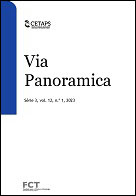Harlem Lives
The Significance of the City in Colson Whitehead’s Harlem Shuffle
Abstract
This essay intends to analyse the depiction of the fictionalized neighbourhood of Harlem in the late 50s and early 60s in Colson Whitehead’s novel Harlem Shuffle (2021) and the significance of the theme of the city in this work of fiction. In order to do so, I will be analysing the novel’s plot in relation to the presented social scale and its implication for an analysis of the increasingly capitalist society of that time, while also making reference to the concept of American Dream and an enquiry of the concept throughout the years, whilst exploring its meaning to the African American community as well. I will be also mentioning the meaning of the city for that community, considering it as both a space for oppression and for resistance and how that affects the construction of a collective cultural identity. For that I will also be making use of concepts of “postracial” capitalism, as coined by Maria Bose.
Downloads
Published
How to Cite
Issue
Section
License
Copyright (c) 2023 Via Panoramica: Revista de Estudos Anglo-Americanos / A Journal of Anglo-American Studies

This work is licensed under a Creative Commons Attribution-NonCommercial 4.0 International License.




